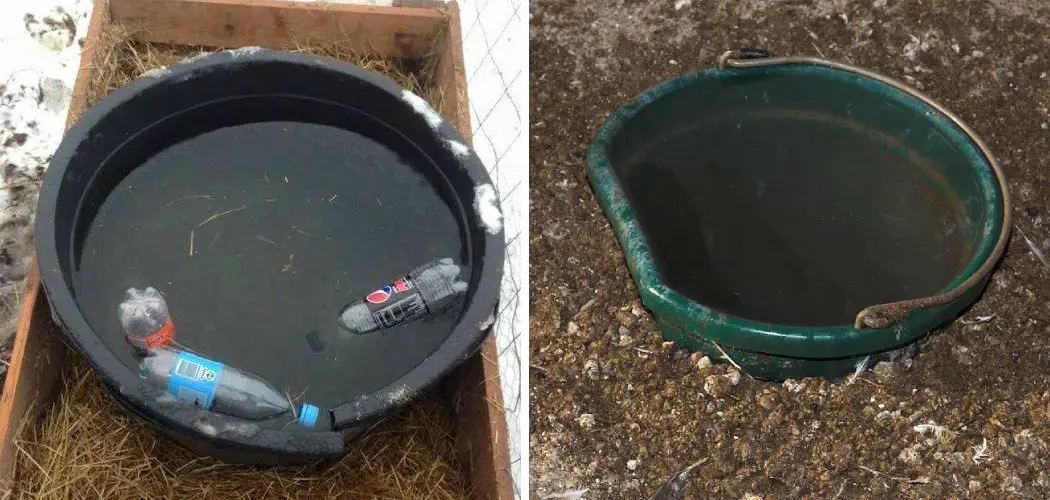Keeping barn water from freezing is essential for the well-being of livestock and the smooth operation of a farm, especially during the colder months. Frozen water can lead to dehydration, discomfort, and even health issues for animals, making it crucial for farmers to implement effective strategies to prevent this occurrence.

From insulated water troughs and heated water buckets to underground piping and circulation systems, there are various methods available to keep barn water from freezing. Understanding the unique needs of your livestock, the climate of your region, and the layout of your barn are all integral factors in determining the most suitable solution.
In this guide, we’ll explore how to keep barn water from freezing and ensure a constant supply of unfrozen water for your animals, promoting their health and welfare year-round.
Importance of Addressing Frozen Water
The issue of frozen water in barn settings cannot be overstated, as it directly impacts the health and productivity of livestock. Animals require constant access to fresh, unfrozen water to maintain hydration, support digestion, and regulate body temperature. Without it, there is a significant risk of dehydration, which can lead to a host of health problems including reduced feed intake, weight loss, and in severe cases, increased susceptibility to diseases.
Furthermore, livestock stress levels may rise due to the discomfort caused by lack of water, potentially affecting growth rates and reproductive efficiency. Thus, proactive measures to prevent water from freezing are not only critical for the welfare of the animals but also for maintaining optimal farm operations and productivity.
Understanding the Risks of Frozen Barn Water
Frozen water in the barn is more than just an inconvenience; it poses significant risks that can affect the overall health and welfare of livestock. First and foremost, animals unable to access water due to ice are at a high risk of dehydration. Dehydration can severely impact the metabolic processes of livestock, compromising their ability to digest food and absorb nutrients effectively.
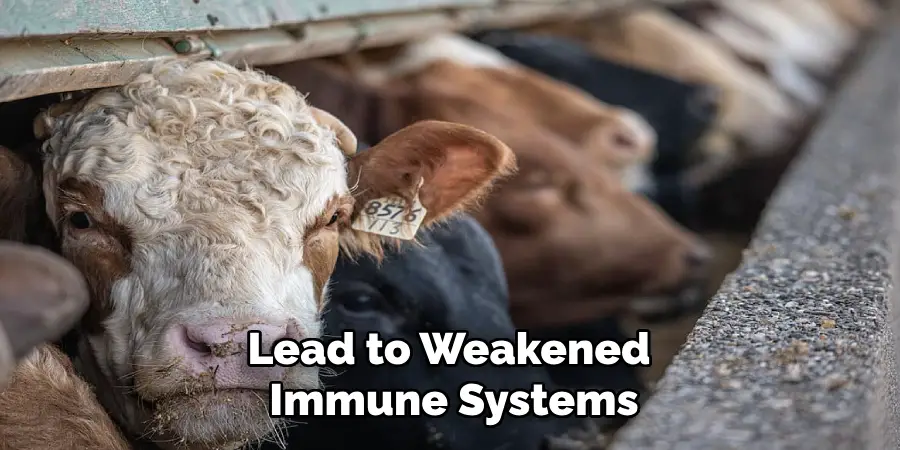
This condition can lead to weakened immune systems, making animals more susceptible to illnesses and infections. Additionally, the effort and frustration animals experience when trying to drink from frozen sources can lead to stress and aggression, further deteriorating their well-being. For pregnant or lactating animals, the consequences of dehydration are even more severe, potentially threatening successful birthing outcomes and milk production.
Efficient management practices to ensure continuous access to water, regardless of freezing temperatures, are therefore essential to prevent these risks and safeguard animal health.
Health Risks to Livestock
One of the most critical aspects of farm management during the colder months is understanding and mitigating the health risks to livestock associated with inadequate access to water. When water sources freeze, the immediate consequence is a reduction in water intake amongst animals, leading to dehydration.
This not only affects their physical health but can also have profound implications for their overall well-being. Dehydration in livestock can result in various complications, including impeded growth, decreased milk production in lactating animals, and a lower resistance to pathogens due to weakened immune systems. In severe cases, it can cause digestive disorders, as water is essential for the normal function of the digestive system.
Additionally, the lack of proper hydration can exacerbate conditions related to stress, potentially leading to behavioral issues. Ensuring that animals have access to unfrozen water is therefore not merely a matter of convenience; it is a vital component in maintaining the health, productivity, and welfare of livestock.
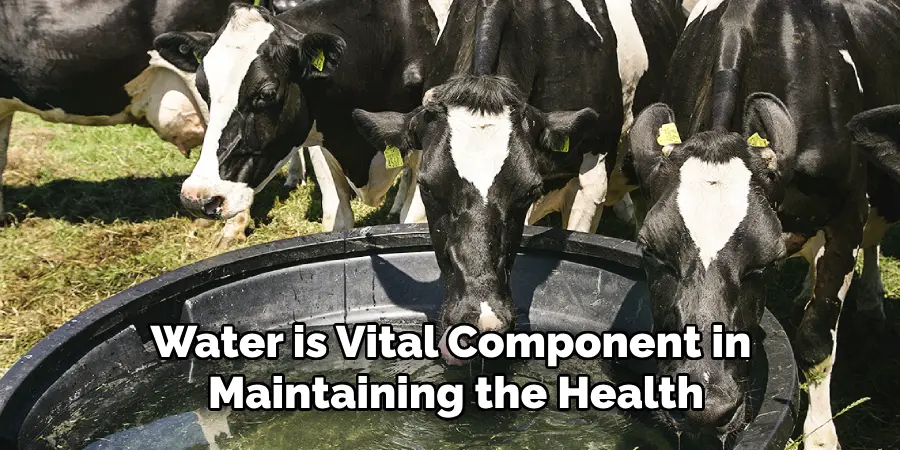
Impact on Livestock Performance
The impacts of frozen barn water extend beyond immediate health risks, significantly affecting livestock performance and agricultural productivity. Adequate hydration is pivotal for optimal animal performance, influencing various parameters such as growth rates, reproductive efficiency, and milk yield.
When livestock are deprived of consistent access to unfrozen water, their ability to consume and utilize feed diminishes, leading to poor weight gain and growth. For dairy farms, this scenario can result in a noticeable decrease in milk production, as hydration levels directly correlate with a cow’s ability to produce milk. Additionally, the stress and discomfort caused by insufficient water intake can impair reproductive functions, leading to reduced fertility rates and fewer successful pregnancies.
In essence, ensuring that barn water remains unfrozen and accessible is not just beneficial for the health and welfare of animals; it’s a critical determinant of their performance and the overall output of livestock-based agricultural enterprises.
Increased Labor and Maintenance
Preventing barn water from freezing not only addresses the vital needs of livestock but also entails a consideration of increased labor and maintenance demands. Implementing solutions to mitigate the risks of frozen water – such as installing heated water systems, insulating pipes, or employing water circulation tactics – requires an initial investment of time and resources. Once these systems are in place, they must be regularly monitored, maintained, and potentially repaired during the colder months.
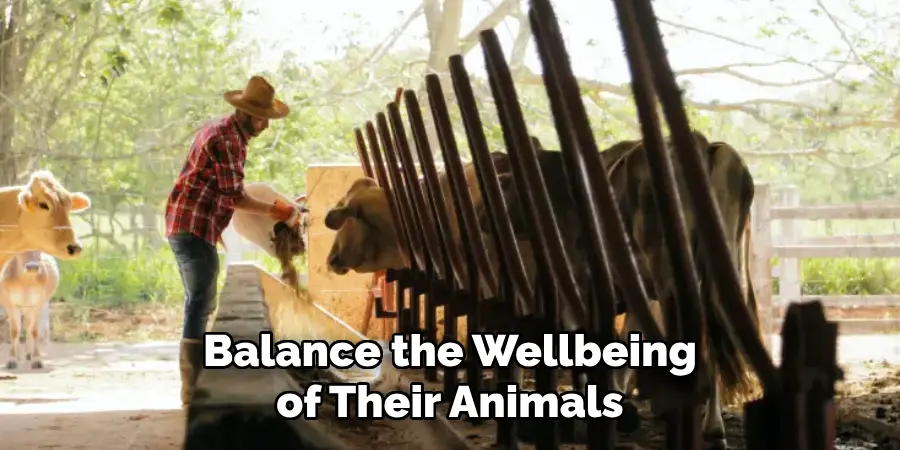
This additional labor can be a significant factor for farmers and livestock keepers, who must balance the wellbeing of their animals with the practicalities of daily farm operations. Furthermore, the energy costs associated with certain methods, like electric water heaters, add another layer of consideration when planning for winter water supplies.
Effective management practices, therefore, must weigh the benefits of ensuring unfrozen water sources against the labor and maintenance commitments required to sustain these solutions throughout the winter season.
Factors Contributing to Frozen Water
Several key factors can increase the likelihood of water freezing in barns, posing challenges to maintaining a liquid water supply for livestock during colder months. Temperature fluctuations are the primary concern; water sources can freeze solid overnight as temperatures drop, even if they thaw slightly during warmer daytime temperatures. Poor insulation of water supply systems, including pipes and tanks, exacerbates the vulnerability to freezing temperatures.
Without adequate insulation, even a brief dip below freezing can cause ice to form. Wind exposure can also accelerate the freezing process, as wind chill can lower the temperature of water surfaces more quickly than still air, particularly in inadequately sheltered areas. Lack of water movement in tanks or troughs contributes significantly to freezing risk.
Water that remains static is far more likely to freeze than water that is moving or agitated. Recognizing and mitigating these factors is essential for preventing water from freezing and ensuring that livestock have access to the hydration they need for their health and productivity.
Type of Water Container
Choosing the right type of water container is crucial in preventing water from freezing and ensuring the continuous hydration of livestock during cold months. Insulated water troughs are highly effective, designed to minimize heat loss and maintain water temperatures above freezing.
These troughs are often equipped with thermal covers or built-in heating elements that actively prevent ice formation. Automatic waterers are another innovative solution, providing fresh water on demand and significantly reducing the water’s exposure to freezing temperatures due to their typically smaller, controlled volumes.
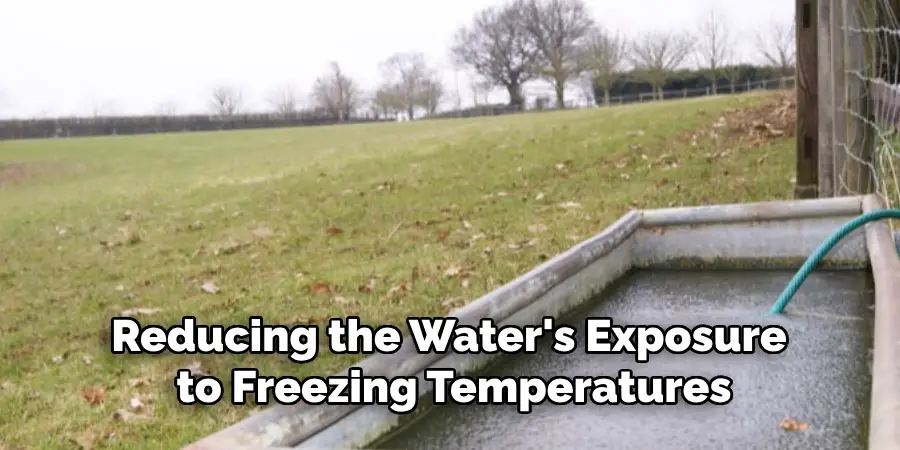
For larger herds, circulating water systems can be beneficial, as the constant movement of water prevents freezing. Materials also play a pivotal role; containers made from thermal-insulating materials or those that are solar-heated harness natural energy to keep water unfrozen. Each type of container offers different advantages depending on the specific needs of the farm, the climate, and the type of livestock being tended to.
10 Methods How to Keep Barn Water from Freezing
1.Insulate Water Pipes and Plumbing:
One of the most effective ways to prevent barn water from freezing is by insulating water pipes and plumbing. Insulation helps retain heat and prevents pipes from freezing in cold temperatures. Use foam pipe insulation or heat tape to wrap exposed pipes, paying particular attention to areas prone to freezing, such as exterior walls and unheated areas of the barn.
2.Install an Electric Water Heater:
Installing an electric water heater in your barn can provide a reliable source of warm water even in freezing temperatures. Choose a heater with sufficient capacity to meet the needs of your animals and install it near the water source. Electric water heaters are relatively easy to install and can be set to maintain a constant temperature, ensuring a steady supply of unfrozen water.
3.Use Heat Tape or Heat Cables:
Heat tape or heat cables can be wrapped around water pipes and plumbing to provide warmth and prevent freezing. These heating solutions are especially useful for areas where insulation alone may not be sufficient. Heat tape should be installed according to manufacturer instructions and plugged into a power source to activate the heating element.

4.Insulate Water Tanks and Troughs:
Insulating water tanks and troughs can help prevent them from freezing and ensure a constant supply of unfrozen water for your animals. Use insulation materials such as foam board or reflective insulation to cover the sides and top of the tank or trough. Additionally, consider using floating insulation devices or tank heaters to provide additional warmth and prevent freezing.
5.Install Automatic Waterers with Built-in Heaters:
Automatic waterers with built-in heaters are convenient solutions for keeping barn water from freezing. These waterers are designed to maintain a constant temperature, preventing water from freezing even in sub-zero temperatures. Choose automatic waterers with thermostatic controls that activate the heating element when temperatures drop below a certain threshold.
6.Use Heated Water Buckets and Troughs:
For smaller barns or areas with limited access to electricity, heated water buckets and troughs are practical options for preventing water from freezing. These portable heating devices come in various sizes and designs and can be placed directly in stalls or paddocks. Heated water buckets and troughs are equipped with thermostatic controls to regulate temperature and prevent overheating. They are also designed with safety features such as chew-proof cords and spill-proof bases.
While some heated buckets and troughs may require a power source, there are also cordless options available for even greater portability. These devices typically operate by utilizing rechargeable batteries or solar panels.
7.Implement Proper Barn Design and Layout:
Proper barn design and layout play a crucial role in preventing barn water from freezing. Locate water sources in insulated areas of the barn and away from drafty doors and windows. Design water supply systems with adequate drainage to prevent water from pooling and freezing. Additionally, ensure proper ventilation to minimize condensation and moisture buildup, which can contribute to freezing. Proper barn design and layout can also help improve the overall comfort and health of your animals.
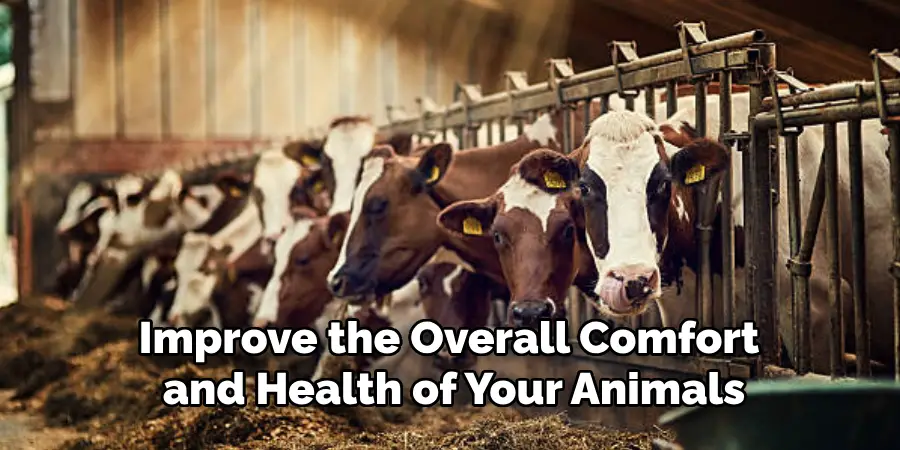
Consider using heated waterers or installing a heat source near the water supply to keep the water from freezing. However, be cautious when using heat sources as they can pose a fire hazard if not properly installed and maintained. Consult with a professional electrician to ensure safety and proper installation.
8.Monitor and Maintain Water Systems Regularly:
Regular monitoring and maintenance of water systems are essential for preventing freezing issues. Check water pipes, plumbing, and heating devices regularly for signs of damage or malfunction. Inspect insulation and replace any worn or damaged materials. Drain and winterize outdoor water sources before temperatures drop below freezing to prevent damage from ice expansion.
9.Provide Additional Bedding and Insulation:
During extreme cold weather, provide additional bedding and insulation in barns to help retain heat and prevent water from freezing. Use straw, hay, or wood shavings to create deep bedding layers in stalls and paddocks. Consider installing curtains or insulated doors to partition off areas and reduce heat loss. Provide windbreaks and shelter to protect animals from harsh weather conditions.
10.Develop Emergency Plans for Water Supply Interruptions:
Despite your best efforts, unforeseen circumstances such as power outages or equipment failures can still lead to water supply interruptions. Develop emergency plans for alternative water sources, such as portable water tanks or nearby streams, in case of emergencies. Stockpile emergency supplies such as bottled water and water purification tablets to ensure you can provide for your animals’ needs during unexpected situations.
Implementing Alternative Watering Systems
In addition to the conventional methods of preventing water from freezing in a barn, exploring alternative watering systems can offer added reliability and efficiency, especially in remote or off-grid locations. Solar-powered water systems stand out as a sustainable option, harnessing the sun’s energy to heat water and maintain it at a temperature above freezing.
These systems can range from simple solar trough heaters to more complex setups incorporating solar panels, batteries, and circulation pumps.
Another innovative solution is the use of wind-powered water systems. Similar to their solar counterparts, these systems utilize wind energy to power devices that prevent water from freezing, offering a cost-effective solution in areas with consistent wind patterns.
Additionally, incorporating geothermal energy to heat water is an exemplary method of leveraging natural ground temperatures to maintain water in a liquid state, regardless of the ambient temperature.
By integrating these alternative systems, farms and barns can achieve greater sustainability and resilience against the challenges posed by cold weather, ensuring the welfare of their livestock throughout the winter months.
Winter Water Management Best Practices
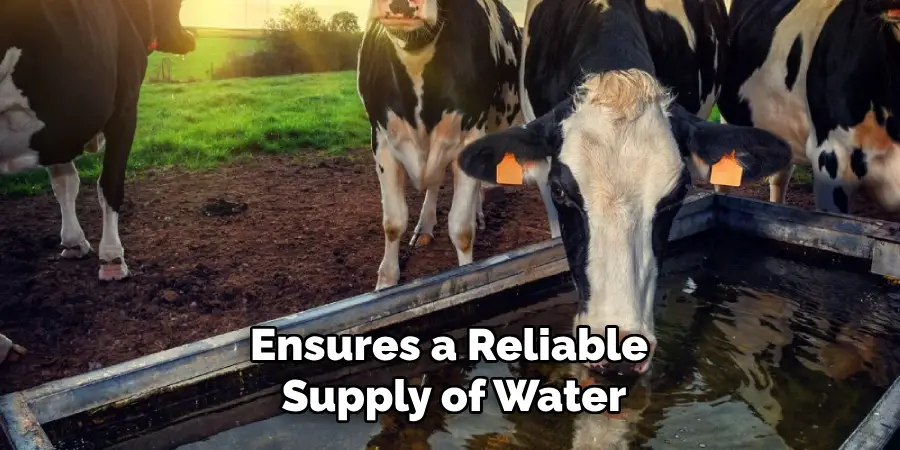
Proper winter water management is essential for maintaining the health and welfare of animals in cold climates. Implementing best practices ensures a reliable supply of water to livestock, minimizing the risk of dehydration and related health issues during the winter months. Key strategies include:
- Routine Maintenance and Inspection: Regular checks for leaks, damage, and proper operation of heating elements and insulation materials help prevent emergencies. Inspection frequencies should increase during winter to promptly address any issues.
- Utilizing Insulated Covers: Custom or ready-made insulated covers for water tanks and troughs can significantly reduce heat loss. Ensuring these covers fit closely while allowing animals easy access to water is crucial.
- Strategic Placement of Water Sources: Positioning water sources in areas protected from the wind and utilizing natural sunlight can naturally keep water at a higher temperature, reducing the energy needed for heating.
- Regular Cleaning: Water sources should be cleaned regularly to prevent the buildup of ice and debris, which can deter animals from drinking and lead to freezing.
- Emergency Water Storage: Having emergency reserves of water, such as large containers or portable tanks that can be quickly deployed, ensures that animals have access to water during power outages or system failures.
- Educating and Training Staff: Ensuring that all caretakers are knowledgeable about the signs of dehydration in animals, how to operate and troubleshoot water heating systems, and the importance of maintaining water quality in winter is fundamental.
Implementing these best practices for winter water management not only assures the well-being of livestock but also contributes to the overall efficiency and sustainability of farm operations during the colder months.
Conclusion
In conclusion, maintaining a consistent water supply in the barn throughout the winter months is crucial for the health and well-being of livestock. By implementing the appropriate strategies to prevent water from freezing, farmers can mitigate the risks associated with dehydration, discomfort, and potential health issues in their animals.
Whether through the use of insulated water troughs, heated water buckets, underground piping, or circulation systems, there are solutions available to suit various needs and budgets. However, it’s essential to tailor these methods to the specific requirements of your livestock, climate conditions, and barn setup. Thanks for reading, and we hope this has given you some inspiration on how to keep barn water from freezing!

